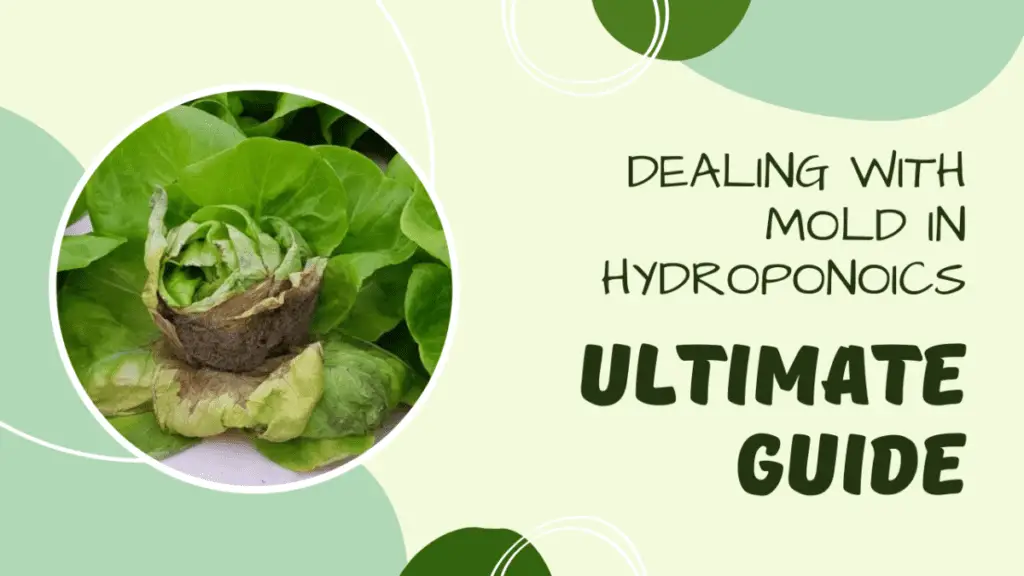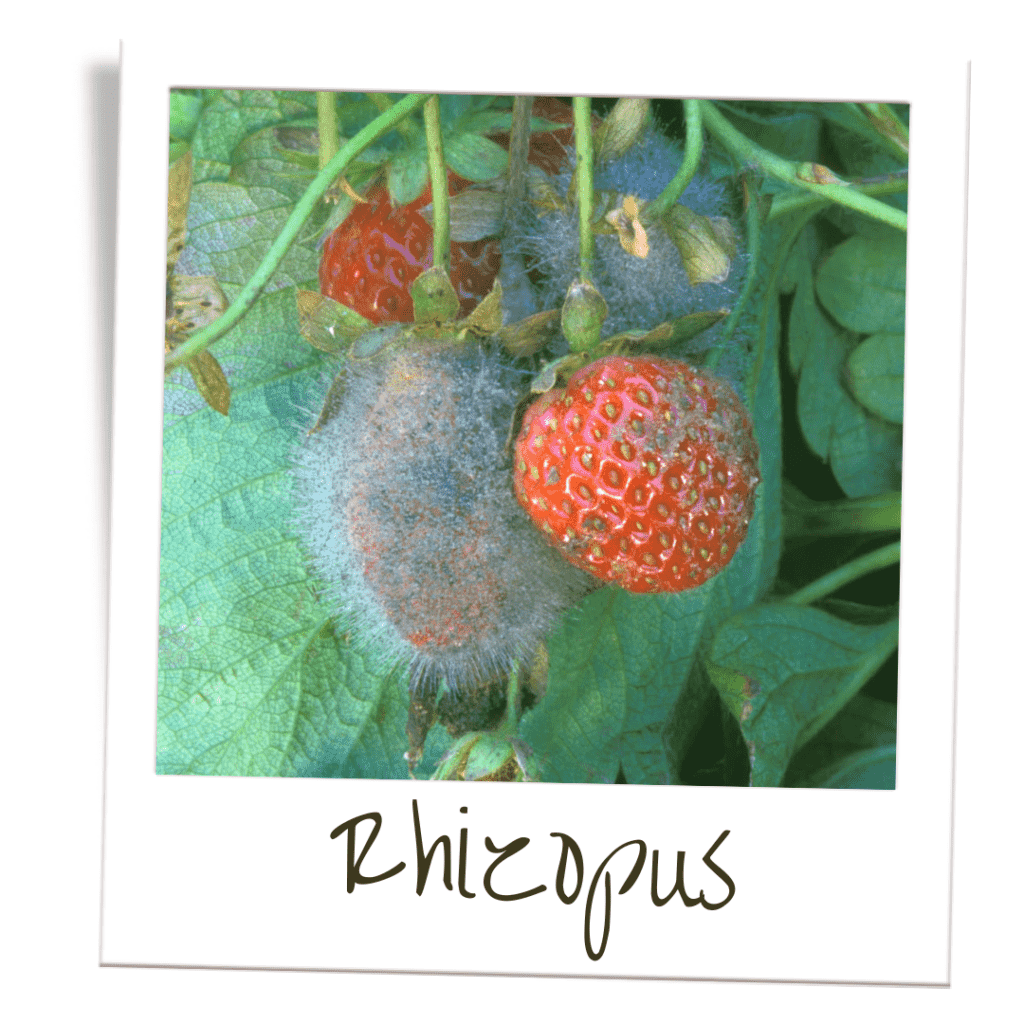This post contains affiliate links. As an Amazon Associate, SmarterHomeGardens.com earns a small commission from qualifying purchases at no additional cost to you.

Mold is one of the most common problems in hydroponics and dealing with it in your hydroponics systems will likely be a constant battle. The key is to keep on top of things and take appropriate preventative measures early that reduce the risk of mold forming in the first place. Fortunately, there are lots of things that you can do to prevent mold in your hydroponics system.
Three of the most important things you can do to prevent mold from forming in your hydroponics system are to ensure plenty of ventilation, control the humidity and carefully prune or clean infected areas as soon as you notice them.
This guide will go into detail on exactly how you can prevent mold from forming in the first place, as well as cover several methods of treatment to help reduce or rid entirely any fungal infections that manage to take hold. Without further ado, grab a cloth, put on some gloves, and let’s dive in.
Dealing with Mold in Hydroponics
What is ‘mold’?
Mold is a type of fungus that takes the form of multicellular filaments called ‘hyphae’. In nature, mold has an important function, helping to break down dead organic material and recycling its nutrients. Mold is incredibly common, which is why hydroponic grow will often find it forming on the roots and stems of their plants, as well as within the reservoir and nutrient solution.
There are many different types of mold and not all are problematic. However, it’s advisable to deal with it properly as soon as you notice mold growing in your system or on your plants to prevent any potential issues.
Identifying common types of mold in hydroponics

1. Gray Mould (Botrytis)
Gray Mould is caused by the fungus Botrytis cinerea and is perhaps the most common fungal infection experienced by hydroponic growers. It causes the soft decay of plant tissue, accompanied by a soft, fuzzy gray-brown mold that eventually turns the infected region brown. This type of mold can spread quickly and, if left unchecked, can result in the death of whichever plant it infects.
2. Mildew
Powdery mildews are another group of fungi that are a common sight in hydroponic pants. Mildew creates a white, dusty coating on the leaves and stems of infected plants and can be very quick to spread. Mildew can also cause stunting or distortion in a plant’s leaves.


3. Alternaria
Alternaria (aka Alternaria leaf spot) forms brown, dry blotches across the leaves of infected plants. It’s, admittedly, not as common in hydroponics as mildew or gray mold, but it can cause an issue if it occurs. There are many different types of Alternaria, each causing slightly different symptoms.
5. Rhizopus
Another, less common, type of mold is Rhizopus. A type of saprophytic fungus (meaning it decomposes dead organic material) Rhizopus most commonly attacks over-ripened fruits and vegetables. We’ve all seen it before, on those strawberries that somehow get lost at the back of the cupboard. It’s that stuff. Rhizopus forms a fuzzy, gray/blue mold that grows outwards from infected fruits and leaves.

Why is mold a problem in hydroponics?
Mold can be a problem in hydroponics because it can prevent roots from growing, cause diseases like root rot, destroy buds and flowers, cause stunted growth and wilting, as well as creating unsightly blotches and decay.
While not all mold can be a problem in itself, it can be a sign that your plants are experiencing high-risk conditions (i.e. the environment is too damp, humid and warm) that can lead to other problems.
That’s why it’s best to err on the side of caution and take preventative measures to control the presence of mold within your hydroponic system. If left unchecked, most molds will spread, potentially threatening the health of multiple plants and, in the worst cases, spelling the end for the entire crop.
The table below highlights the key issues each type of mold can cause for your hydroponic plants:
| Type of Mould | Issues Caused Hydroponics | Toxicity to Humans |
|---|---|---|
| Gray Mould (Botrytis) | – Unsightly ‘fuzz’ on leaves, fruit and stems – Shrivelled flowers and buds – Soft, brown decay of mature fruits and vegetables | Low |
| Mildew | – Tissues become stunted or distorted – Can provoke a strong color change | Low |
| Alternaria | – A black or dark brown blight on leaves – Can cause leaves to die and decay | Low |
| Rhizopus | – Unsightly ‘fuzz’ on fruits and vegetables – Soft, brown decay of mature fruits and vegetables | Medium |
Additionally, mold can be toxic for humans. It can trigger nasal congestion, sneezing, and other respitiroy issues, particularly affecting those with pre-existing conditions like asthma.
Preventing Mould in Hydroponics
1. Improve ventilation
Good ventilation is one of the single most important factors in preventing mold in your hydroponics system. Ventilation helps to reduce humidity and condensation, which are two of the leading causes of mold growth. Blowing air through your plants, even with a simple fan, reduces moisture and warm air that creates the perfect environment for molds and fungi to form.
2. Control the humidity
Mould thrives best in humid environments. It’s therefore important to keep humidity at moderate levels (with a target of between 40-60% relative humidity). Reducing humidity removes one of the key environmental factors molds love, as well as helps your plants to transpire/breathe. The best way to reduce humidity is proper ventilation (see point 1). You can also purchase a dehumidifier which works particularly well if growing plants within a small room or grow tent.
The Gocheer or Makayla dehumidifiers work great for larger indoor growing areas. For smaller grow space, the more compact Pro Breeze Mini is a good choice and well-reviewed on Amazon.
3. Routinely clean your plants
Taking the time to clean your plants is another good way of preventing mold and fungus from taking hold. If you see mold forming, wipe it off immediately with a damp cloth. Make sure the mold is absorbed into the cloth and not wiped or brushed into another part of the plant.
I routinely clean the Smart Soil in my Click & Grow Smart Garden which always seems to get moldy.

4. Carefully remove infected areas
In some cases, it may be necessary to remove the infected part of the plant. You should do so carefully and use decent pruning snips. Make sure that you do not brush or shake infected material against non-infected areas as this could cause the mold to spread. If you can, it’s best to burn the infected material. Do not put it into your compost or use it as mulch.
5. Do not blow or brush it away
To avoid spreading mold throughout your hydroponics crop do not blow or simply brush away the visible mold from your plant’s leaves and stems. This will likely only serve to further spread the infection through the plant and onto neighboring plants. Instead, delicately remove infected areas with printing snips or wipe with a cloth.
6. Remove dead organic material
Many molds and fungi are saprophytic, meaning they decompose dead plant material. Identifying and removing dead organic matter within your hydroponics system before these fungi have a chance to take hold will go a long way to preventing the origination or spread of any infections.
7. Sanitise your equipment
Just like with syringes and scalpels, you must make sure all the equipment you are using is sanitized and is not a carrier for fungal spores or other diseases. Make sure to thoroughly clean any tools you have used to remove mold and fungus from your plants. Do not use the same tools for different crops if you can avoid them.
8. Properly clean the system between crops
It’s a good idea to thoroughly clean out your hydroponics system between crops. After harvesting, and before starting a new crop, wash the entire system with a clean water and vinegar solution and gently scrub the system clean with a brush/sponge. When done, wash the system again with clean water.
Here’s an example of how to clean a Deep Water Culture (DWC) hydroponics system.
Follow the manufacturer’s cleaning guidance for your type of hydroponics system.
Treating Mould in Hydroponics
Non-chemical treatments
The best thing you can do is to follow the steps outlined above for preventing mold and fungal infections from taking hold in the first place. However, should an infection occur, physical removal of the mold is usually the best course of action, either by carefully removing infected material or by physically wiping away as much of the mold as you can using a damp cloth.
Chemical treatments
Molds like Gray Mould (which is one of the most common) and Mildew are notoriously difficult to treat with fungicides or other chemicals. And personally, I would not recommend using heavy-duty chemicals anywhere near your plants or hydroponics systems. The best policy is prevention and physical removal.
Final thoughts and considerations
Take preventative steps
Prevention is the best policy when it comes to mold. I’ve listed eight different things that you can do to prevent mold in your hydroponics system. Following these steps will help to dramatically reduce the chance of infection and will help to keep plants happy and healthy until they are ready to harvest.
Keep an eye on things
Simply keeping an eye out for molds or infections can help considerably to prevent outbreaks. If you spot something that doesn’t look quite right, investigate it and take action.
If you spot mold, do something about it right away
The sooner you act and remove the mold the less likely it is to spread and cause a problem for your plants. Molds are incredibly common and a little mold isn’t likely to cause much damage to your hydroponics crops. However, if left unchecked what started as a few infected areas can quickly take over either plants or worse, crops.
